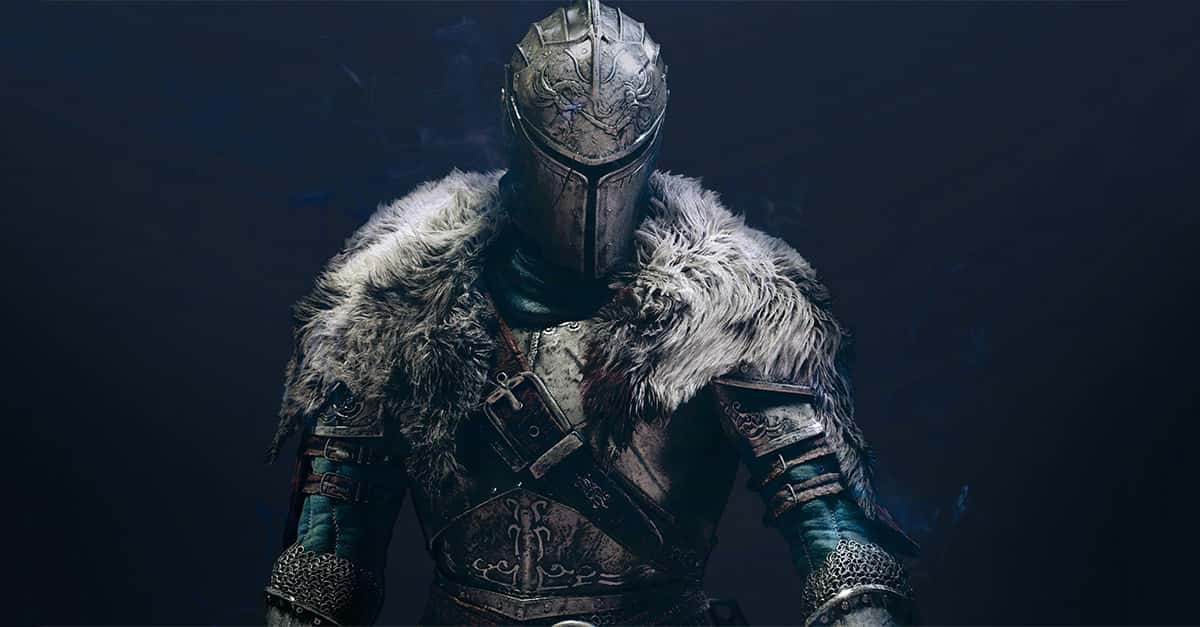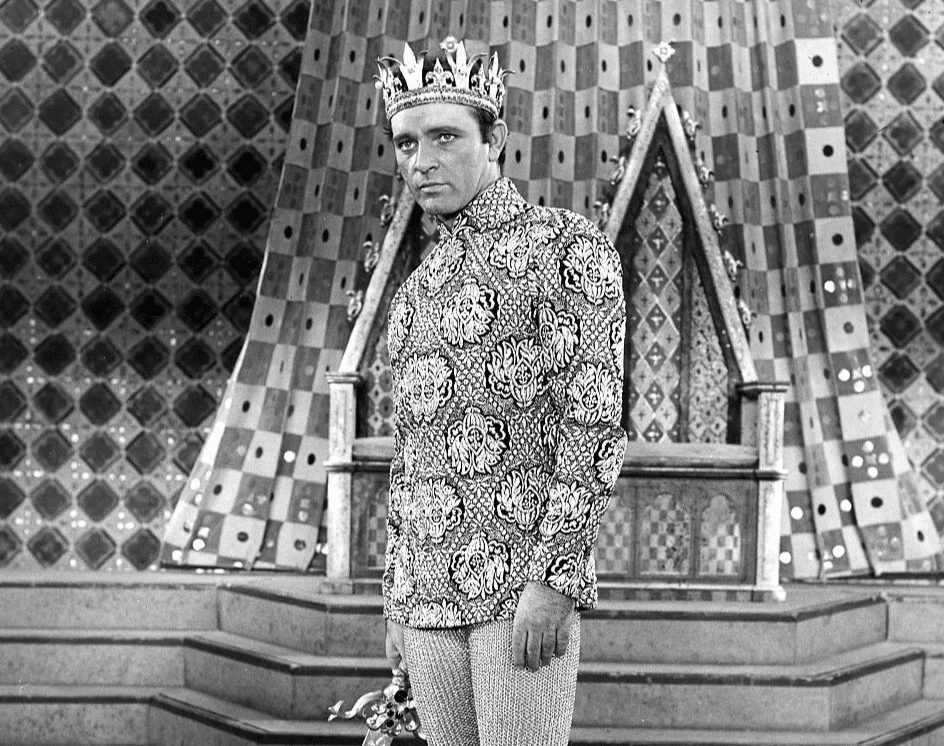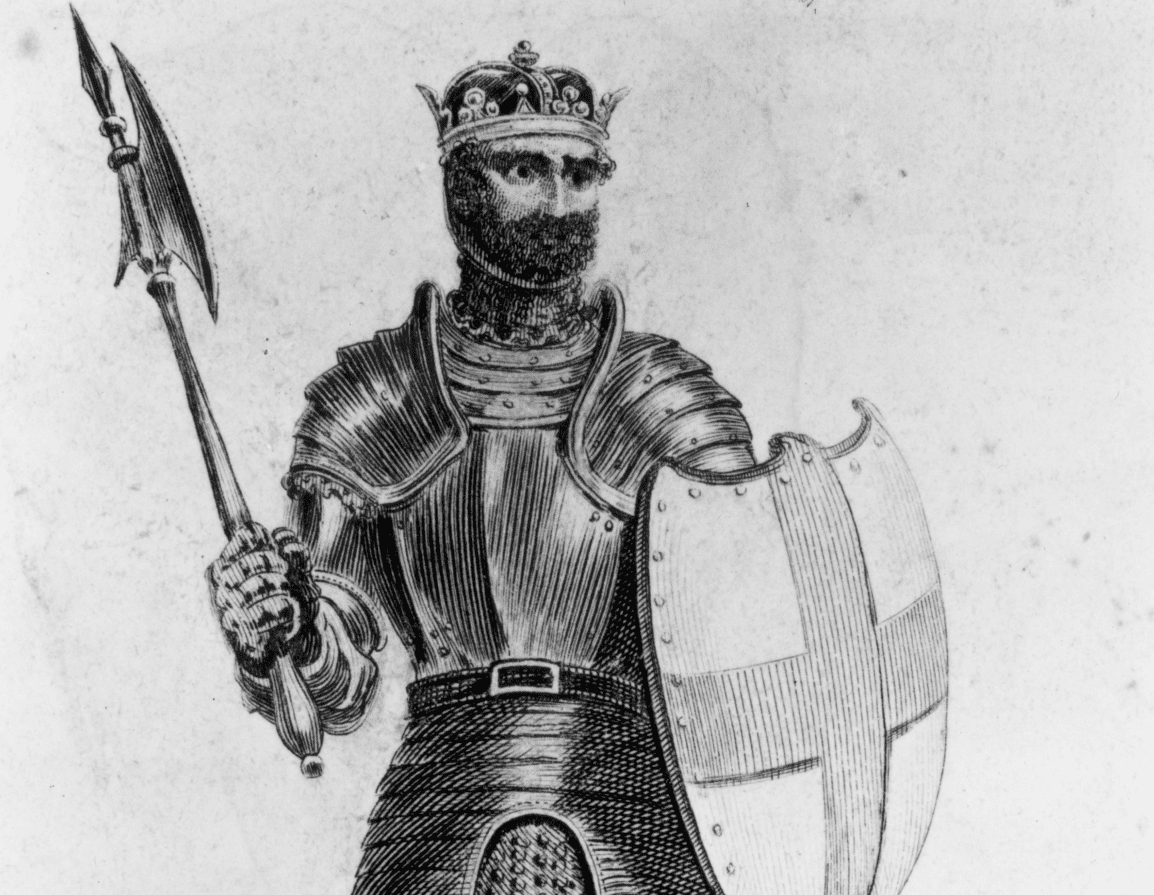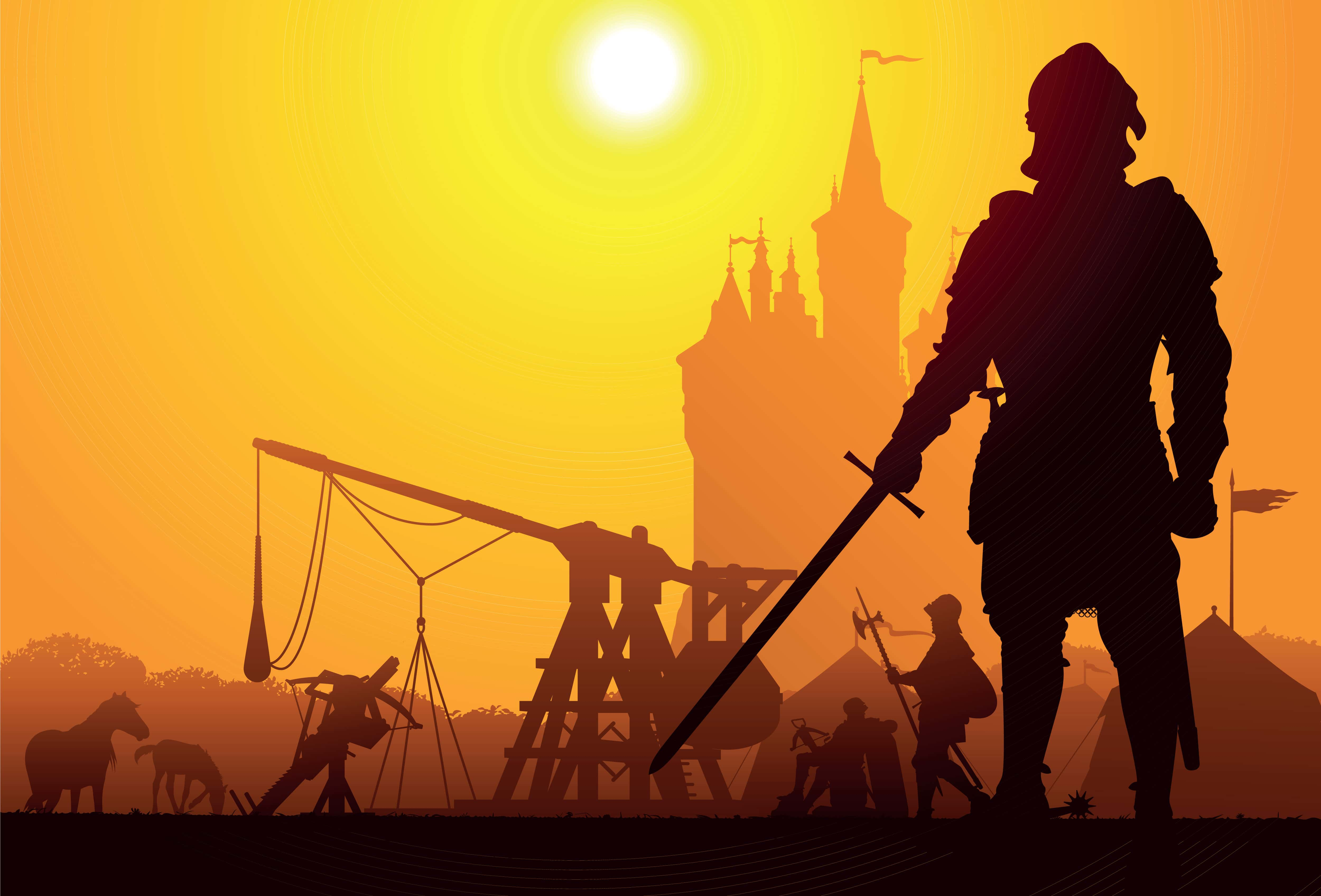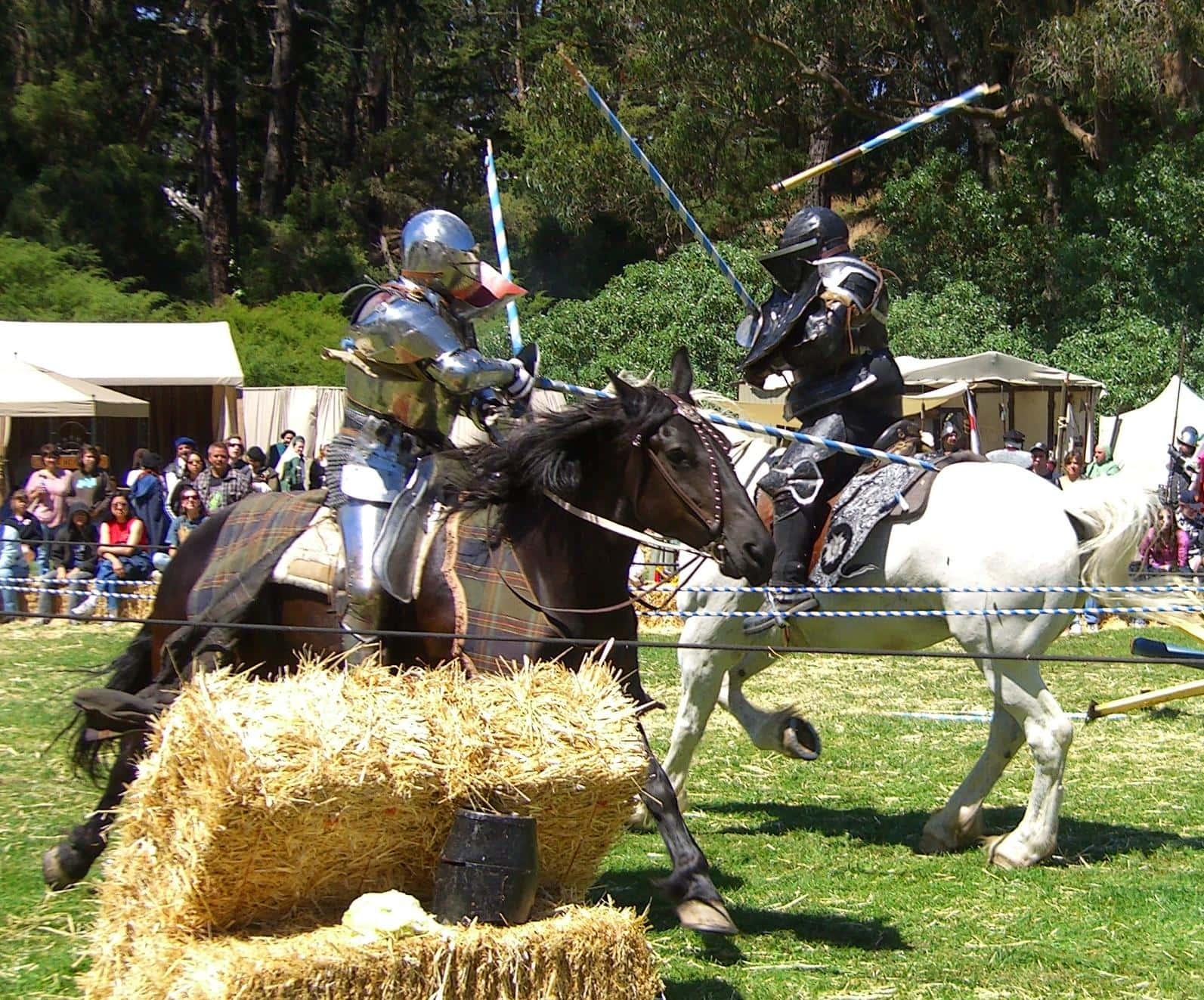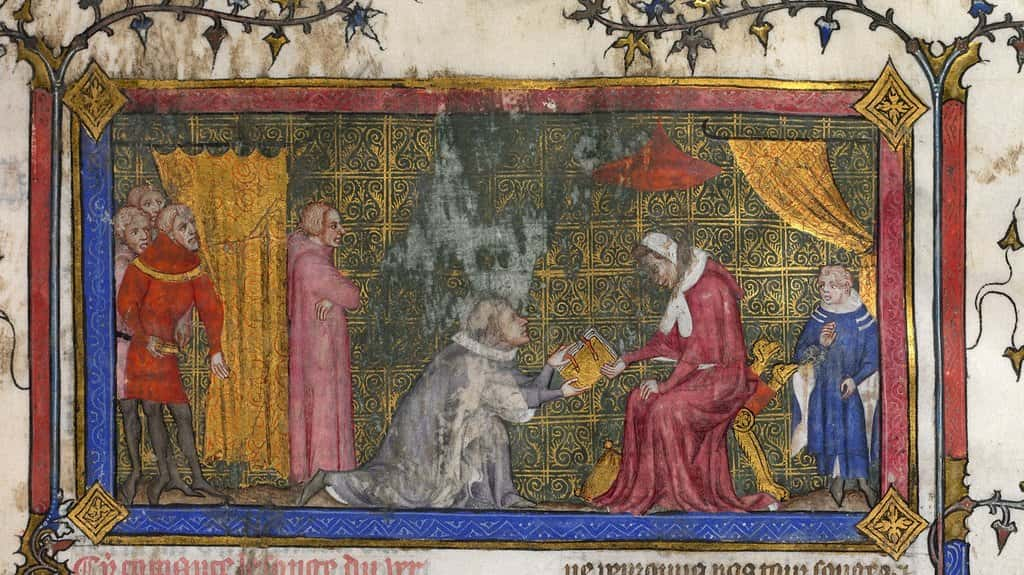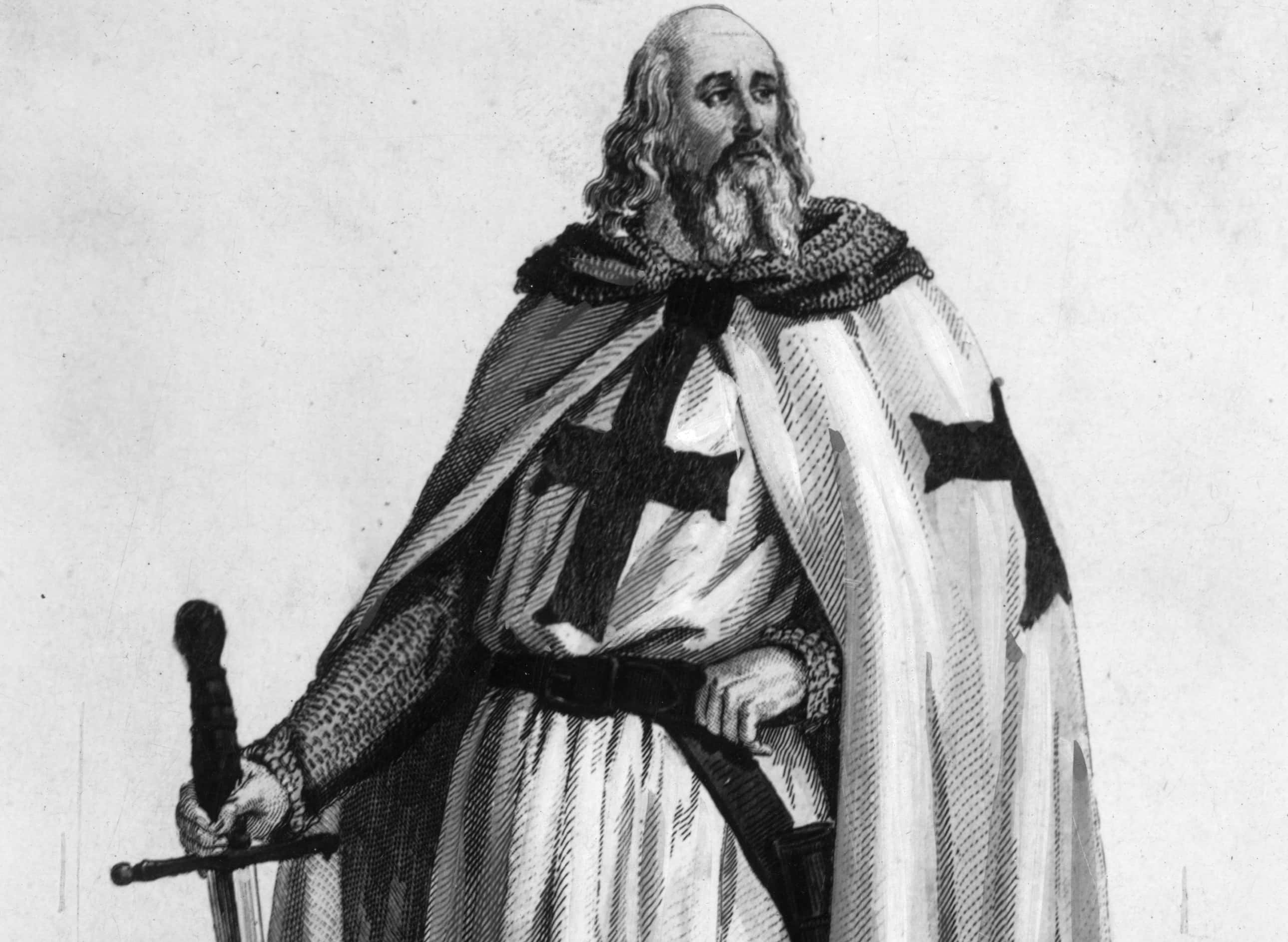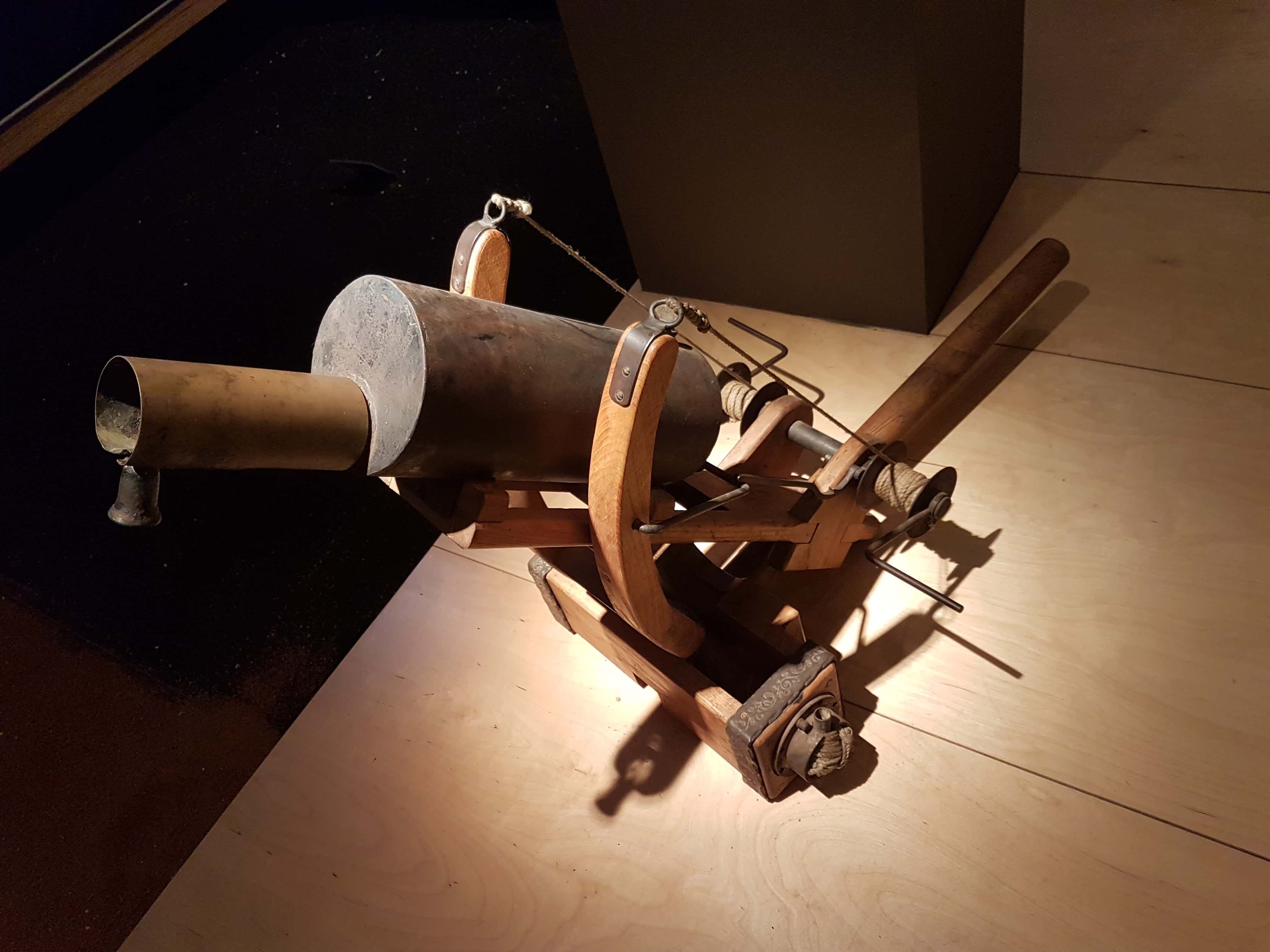“Most have been forgotten. Most deserve to be forgotten. The heroes will always be remembered. The best. The best and the worst. And a few who were a bit of both.” ―George R.R. Martin, A Feast for Crows
There have been hundreds of portrayals of medieval knights in popular culture, but how many get it right? Was my last visit to Medieval Times historically accurate? Were medieval knights as handsome as Heath Ledger in A Knight’s Tale? Should we all maybe learn about real medieval knights and stop going with idealized Hollywood portrayals? Probably. On that note, here are 44 valorous facts about medieval knights.
Medieval Knights Facts
44. Peasants Need Not Apply
Let’s start with the basics. You probably have a vision of an army of men all gathered together wearing armor and wielding swords and shields, all while maneuvering on a horse. Well, you’re right. But not just any man could apply to be a knight. Only the wealthy were able to afford such an honor, as all of the above came at a hefty price tag.
43. You Gotta Look Good
Just like with anything, the evolution of a knight’s armor took a lot of time to get right. Originally, it was just a lot of strategically placed padding and chain mail, but eventually evolved into something sturdier that would actually protect them in battle. A knight who wore full armor would have an extra 50 pounds or so of weight on him, and would also be considered more important. And don’t forget, it all had to be custom-made for each knight.
 Pxfuel
Pxfuel
42. How Many Were There?
Depending on who you ask, there were eight or nine major crusades that took place over a 200-year period. It was devised by the Church to regain the Holy Land from the Muslims, with more, smaller ones interspersed. The Church and the knights who fought in the battles ultimately failed, but Pope upon Pope still kept the fight going.
41. I’ll Give You Some Land, But…
The best knights were rewarded in the form of land. The only stipulation? The knight would have to be ready to fight whenever his King called on him. This give-and-take between king and knight would go on over the next 700 years under countless rulers.
40. Let’s Go Back Even Further
Some believe that knights go back to the Roman Empire. We all associate knights with their horses and the Romans were very well known for equestrian order, the Ordo Equestris. There’s no absolute link between the order and knights, but there are too many similarities to count any possibility of influence out.
39. Which Horse Would You Be?
Warhorses were bred specifically for battle. On average, a warhorse would be up to five feet and four inches high and was usually a male. You’d never see a warhorse being paraded around, though. There were special horses just for those scenarios.
38. Fact or Fiction?
King Arthur. You know the name, you’ve seen the movies and TV shows and heard the myth surrounding him. But was he real? Truth is, no one really knows. What we think we know of Arthur is that he lived in about the fifth or sixth century and led the Brits into battle against the Saxons. All the extra stuff: his knights of the round table and that famous sword of his, Excalibur, probably didn’t actually exist. Now, if you’re like me, you might want to believe in the even more fantastical part of the story: where magic and Merlin come into the picture.
37. History Skewed Things a Little
Someone who was very real was Richard the Lionheart, or Richard I of England. He lived from 1157 to 1199, which really isn’t that long by today’s standards, but he was also shot with an arrow and that doesn’t exactly happen these days either. Modern-day research on his remains show that he likely wasn’t poisoned by the arrow that killed him, and it was likely more of an untreatable infection.
36. Absentee Ruler
Richard the Lionheart’s reign lasted only 10 years, starting in 1189, and his people really didn’t see too much of him. The first three years he was battling in the Third Crusade, giving more pomp to his name, but he was taken hostage when he returned to England. The Holy Roman Empire only released him after the ransom for his release was paid.

History's most fascinating stories and darkest secrets, delivered to your inbox daily.
35. The Family Business
If you were born a son to a knight, chances are you became one too. You were also able to become a knight by earning it on the battlefield.
34. Not for the Faint of Heart
It was hard work though. Boys who wanted to be knights had to serve as a page for seven years, then as a squire for another seven years! And yeah, even the knights’ sons had to go through the long process. When it was all said and done, they took part in the accolade, or dubbing, ceremony, with a sword touching the neck or shoulder to declare him a true knight.
33. Now That's a Warrior
From there, du Guesclin was sent to take care of Charles II of Navarre. He was taken hostage by the British after that, with Charles V paying the ransom and then sending him off again to Spain. Yet again, the British took him captive, and Charles paid the ransom. Du Guesclin went on to reclaim much land from the British for the French over the next decade or so, before his death in 1380.
32. The Scottish Rebel
Have you seen Braveheart, starring Mel Gibson? Well, it was based (loosely) on William Wallace, who died pretty young. The Scot was alive somewhere between 1272 and 1305 and made quite a name for himself in his short years. He killed an English sheriff in 1297 and was one of the main contributors to the Scottish rebellion. That same year, he and another rebel joined their forces and won a pretty big battle against the British at Stirling Bridge.
 Braveheart ,Paramount Pictures
Braveheart ,Paramount Pictures
31. Killed for the Cause
Unfortunately, Wallace also saw major defeat the following year at Falkirk, which forced him to go into hiding. He was found in 1305 and taken to England where he was found guilty of treason, and ultimately executed.
 Braveheart ,Paramount Pictures
Braveheart ,Paramount Pictures
30. Church and State
With the Church heavily influencing kingdoms and knighthoods, it's really no surprise that they had a say in how swords were to be shaped. If you notice, they look like the cross. Eventually, knights carried other weapons as well, like maces, spears, and lances.
29. Vowing Their Allegiance
The Knights Templar set up their headquarters on Temple Mount in Jerusalem, with help from the ruler at the time, Baldwin II. That was when they changed their name, and vowed their service to the Christians coming into the city. It wasn’t until 1129 when they received formal support from the Catholic Church.
28. League of Their Own
Just 10 years after receiving that acknowledgment, Pope Innocent II allowed the Knights Templar their own set of rules. Things like not having to pay taxes and only having to listen to the Pope and no one else. The Knights took oaths, which included poverty, chastity, and obedience and would pray every day. But what really set them apart? The red cross on their attire.
27. No Cavalry Too Big
Known for not backing down, the Knights Templar once fought a battle against more than 25,000 Muslim soldiers at the Battle of Montgisard. 500 of the Knights and just a few thousand other men were able to defeat their foes.
26. Driving Out the Defenders
The Knights Templar were driven out of Jerusalem in the latter half of the 12th century, with most ending up in Paris. There, they were persecuted and tortured. Some were even burned alive. They officially disbanded in 1312, though reluctantly. Some believe the survivors went underground, but even now, the Catholic Church agrees that the treatment they faced while in France was not justified.
25. The New Knights
The Knights Hospitaller, who were related to the Templars, defended sick and poor pilgrims during the Crusades and wore a white cross on their clothes instead. They eventually moved to Malta and Rhodes island after the battle over Jerusalem.
24. Hospitality in Another Form
The Knights Hospitaller had an offshoot in Germany. The Teutonic Knights tried to take over Prussia, and though successful, were also eventually defeated by the Polish.
23. Was He or Wasn’t He?
John Hawkwood gained his status during the Hundred Years’ War while fighting for the British. No one knows who knighted him, or when, so his role as a knight is a little up in the air. The Italian republics also basically had an open bidding war on Hawkwood, because he was so well-known. Hawkwood and his White Company as they were known would fight for whoever paid them the most. When he died in 1394, the Florentines paid homage to him through a painting at the Basilica di Santa Maria del Fiore.
22. El Cid at Your Service
Let’s face it, when we think of knights, we think more of the British or French versions. El Cid was a Spanish knight, whose real name was Rodrigo Diaz de Vivar, and he lived from 1043 to 1099. He mainly fought opposite Spain’s Muslim rulers, but sometimes he fought with them. El Cid helped to gain the kingdom-city of Valencia in 1094, one of his biggest triumphs. He actually ruled over the city too, but when he died (of natural causes, nothing too exciting like an arrow to the heart), his widow surrendered it away.
21. What’s in a Name?
There were Russian knights too! Case in point: Alexander Nevsky, who lived between 1220 and 1263, more or less. He was also known as Prince of Novgorod or Grand Prince of Vladimir but decided to change things up after overcoming the invading Swedes on the Neva River.
20. They Really Like Him
Nevsky was revered by his people. After stopping the invasion from the North by Sweden, he also battled and won against one branch of the Teutonic Order during the Battle of the Ice. The Mongolians managed to overcome him though, but Nevsky was smart and negotiated with them so their hold wouldn’t be as bad. When he died, the Russian Orthodox Church recognized his support for them by canonization.
19. Courage, Valor, Bravery – Shall I Go On?
Chivalry was also an order amongst knights. They came after the Crusades and imitated military orders. The highest level considered in the United Kingdom was the Order of the Garter, founded in 1348 by King Edward III.
18. You Give Knighthood a Bad Name
Chivalry was kind of dead, though. Sure, the knights took their oath to protect women, the weak, the Church and their king, but a lot of knights took advantage of their roles. You would often see them pillaging towns and even killing innocent people when there were no wars to fight.
17. Hell Hath No Fury
Not all women needed protecting. History shows some female knights who stood their ground and fought alongside the men. Case in point: Countess Petronella of Leicester and Nicolaa de la Haye. Countess Petronella fought with her husband against Henry II while de le Haye fought alongside William Marshal against the French.
16. No Knights Needed
Knights were eventually outsourced to regular soldiers towards the end of the Middle Ages. Most countries had formed armies, paying and training men to fight so that the nobility didn’t have to anymore. Warfare was also changing, with new weaponry that made it difficult for knights to move around in their armor.
15. Killers Wanted
The first king to go to the streets for new soldiers was Edward III in 1337. He decided to round up all the violent men he could find, even pardoning men who were in jail if they promised to fight for him.
14. A Knight Who Writes!
Sir Geoffroi de Charny wrote the book on knighthood. Literally! The French Nobleman, a knight himself, wrote three books that we know of before his death on the battlefront in 1356. His most famous book was The Book of Chivalry and was an important resource for those seeking to become a knight. He also fought during The Hundred Years’ War and was taken captive twice. He even managed to talk his way out of it, saying that he would pay his own ransom!
13. A History of the Black Prince
Ah, Edward, the Black Prince. He’s a character in A Knight’s Tale, you know. But I digress. The real Edward of Woodstock, Prince of Wales lived from 1330 to 1376 and likely earned his nickname because he wore black armor. He fought in a couple important battles, including the Battle of Crecy during the Hundred Years’ War, and also alongside Edward III, his father, during the Battle of Poitiers. He even helped get Peter of Castile back on the throne in Spain. He would never become king, though. He became too ill and died one year before his father, so the crown went to Edward’s son, Richard II.
12. Hotheaded
Sir Henry Percy was actually knighted by Edward III and went with Richard II after he became king on an expedition to Scotland. Henry was known for his bad temper and was nicknamed “Hotspur” as such. After Scotland, he went to France, and his status grew. Unfortunately, his family had some conflict with the new king, Henry IV, and he was essentially forced to rebel against the king, much to his detriment. He died after being conquered during the Battle of Shrewsbury in 1403.
11. That Doesn’t Sound Nearly as Fun
You would think that tournaments were kind of like the Olympics of the Middle Ages, kind of like how A Knight’s Tale portrays it, with a number of different events. In fact, tournaments lasted for hours for days and were basically just enactments of battles.
 Pxfuel
Pxfuel
10. Told You Chivalry Was Dead
Tournaments also helped make knights famous and richer. They would steal the horses of their fellow knights and even took other knights hostage, demanding ransom money!
 Pxfuel
Pxfuel
9. A True and Noble Knight
Speaking of tournaments, the aforementioned William Marshal, 1st Earl of Pembroke, gained his fame through tournaments and even warfare. King Henry II originally made Marshal guardian for his oldest son, but when Henry’s sons revolted against their father, Marshal stayed true to Henry and helped end the rebellion.
8. Never Wavering in His Duties
Remember Richard the Lionheart? He kept Marshal on when he took over as king, much to his benefit. Richard’s brother, John, tried seizing the throne, but Marshal put a stop to that. However, when Richard died, Marshal helped to make sure John would successfully take the throne and became one of John’s closest advisors. After John died, Marshal continued to stay loyal to the family, ensuring John’s son Henry III would take over for his father.
7. Let’s Joust!
You could also see knights jousting with each other when there were no battles to be fought. It was something like a sport (think Medieval Times) but it would never be the main event. Usually that would be a melee, where two groups of knights would fight against each other.
6. A Knight With Force
One of the greatest knights of France is largely believed to be Bertrand du Guesclin. He caught the attention of Charles V, who sent him around to deal with men Charles didn’t want around. Du Guesclin had helped keep morale in France high after defending against the British in the battle at Rennes in 1364.
5. Score One for the Defenders
Castles were made with knights in mind. Those spiraling staircases? Made that way for a reason. Just imagine trying to wind your way up one to attack, wearing all of that armor. Not to mention, you were going clockwise up the staircase (almost all castle staircases turn the same way), which meant your left side was exposed. Most knights fought with their swords in their right hand, which gave the defending knights the advantage.
4. Serving the King, Indeed
Those weren’t the only reasons for the end of the knight. You see, knights were able to pillage without cause, and would often pay the king with some of what they stole. That money then turned around and paid the new soldiers. Oddly enough, knight is just an Old English term for servant.
3. Church and State
Mysterious as they may be, we actually know the exact origin of the Knights Templar. The need for a group of knights arose after Jerusalem came under Christian control in 1099 during the Crusades. Many pilgrims were robbed or even killed as they tried crossing through areas still controlled by Muslims. Hugues de Payens, a French knight, started up the original Knights Templar somewhere around 1118. Back then they were known as the Poor Fellow-Soldiers of Christ and the Temple of Solomon and only had eight other members.
2. Let's Take It Way Back
The King of the Franks, Charlemagne, was the first to introduce the world to a knight, all the way back in the eighth century. He needed reliable soldiers who were able to fight on horseback in battle across his region.
1. End of an Era
The era of the knight came to an end with a simple invention: the arbalest. What’s an arbalest? I asked myself the same question. It was a super-crossbow made of steel and came about towards the end of the twelfth century. Since it was quite a lot sturdier than your average bow and arrow, it could accurately shoot up to 300 meters away and was a lot quicker to reload. Oh, and the major selling point? It could pierce through a knight’s armor. Someone who was really good at using the arbalest could take down two knights a minute. Crazy!

